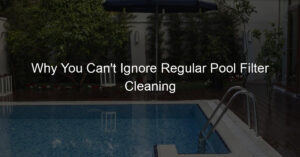Introduction to Underwater Pool Repair
Swimming pools are a great source of fun and relaxation, but they also require regular maintenance and repair. One of the most critical aspects of pool maintenance is underwater pool repair. This process involves fixing issues that occur beneath the water surface, ensuring the pool remains safe and enjoyable for everyone.
- Understanding the Importance of Underwater Pool Repair
- Common Issues Requiring Underwater Pool Repair
- Cracks and Leaks: These are the most common problems in swimming pools. They can occur due to ground movement, temperature changes, or the pool’s age. If not repaired promptly, they can lead to significant water loss and structural damage.
- Loose or Broken Tiles: Tiles can become loose or break due to wear and tear, or improper installation. Loose or broken tiles can cause injuries and also affect the pool’s appearance.
- Pool Light Issues: Pool lights can malfunction due to water seepage or electrical issues. This not only affects the pool’s aesthetics but can also pose a safety risk.
Underwater pool repair is crucial for several reasons. Firstly, it helps maintain the pool’s structural integrity. If left unattended, minor issues can escalate into significant problems, leading to costly repairs or even a complete pool replacement. Secondly, underwater pool repair ensures the safety of the pool users. Damaged pool surfaces can cause injuries, and water leaks can lead to slips and falls. Lastly, regular underwater pool repair can enhance the pool’s appearance, making it more inviting and enjoyable.
There are several common issues that require underwater pool repair. These include:
Regular pool inspection can help identify these issues early, making the repair process easier and less costly.
Best Pool Repair Techniques
When it comes to maintaining your swimming pool, knowing the best repair techniques is crucial. These methods not only ensure the longevity of your pool, but also contribute to a safe and enjoyable swimming experience. Let’s delve into the top professional pool repair techniques.
Professional Pool Repair Techniques
Professional pool repair techniques are designed to tackle various issues that can arise with your pool. These methods are often more complex and require specialized knowledge and equipment. Here are the three most common professional pool repair techniques:
- Underwater Pool Patching
- Swimming Pool Leak Repair
- Pool Surface Repair
Underwater pool patching is a technique used to repair small to medium-sized holes or tears in the pool liner. This method involves applying a waterproof patch to the damaged area while the pool is still filled with water. It is a cost-effective solution that can save you the hassle and expense of draining your pool for repairs.
Swimming pool leak repair is a more complex process that involves detecting and sealing leaks. Leaks can occur in various parts of the pool, including the plumbing system, the pool shell, or the pool equipment. Professionals use specialized tools and techniques to accurately locate and fix these leaks, preventing further damage and water loss.
Pool surface repair is a technique used to address issues with the pool’s surface, such as cracks, blisters, or discoloration. This process typically involves draining the pool, repairing the damaged area, and then refinishing the entire pool surface to ensure a uniform appearance. It’s a comprehensive solution that can significantly enhance the look and lifespan of your pool.
Each of these professional pool repair techniques has its own set of advantages and is best suited for specific types of pool issues. By understanding these methods, you can make informed decisions about the best way to maintain and repair your pool.
DIY Underwater Pool Repair Techniques
Repairing your own pool can be a rewarding and cost-effective endeavor. Let’s explore the materials you’ll need and a step-by-step guide to DIY underwater pool repair.
- Materials needed for DIY underwater pool repair
- Underwater epoxy or pool putty: This will be used to seal any cracks or holes in the pool.
- Pool patch: This is a special type of vinyl that can be used to repair larger damages.
- Scrub brush: A brush will help you clean the area around the damage before you start the repair.
- Scissors: You’ll need these to cut the pool patch to the right size.
- Weight belt: This will help you stay submerged while you’re making the repair.
- Step-by-step guide to DIY underwater pool repair
- Identify the damage: The first step in any repair is to find the source of the problem. This could be a crack, a hole, or a tear in the pool liner.
- Clean the area: Use your scrub brush to clean the area around the damage. This will help the epoxy or putty stick better.
- Prepare the epoxy or putty: Follow the instructions on the package to mix the epoxy or putty. It should have a thick consistency.
- Apply the epoxy or putty: Use your fingers to apply the epoxy or putty to the damage. Make sure to press it firmly into the crack or hole.
- Cut and apply the patch: If the damage is large, cut a piece of pool patch to cover it. Then, apply the patch over the epoxy or putty.
- Wait for it to dry: Allow the repair to dry for the recommended amount of time. This can vary depending on the type of epoxy or putty you used.
Before you dive into the repair process, make sure you have the following materials on hand:
Once you have your materials ready, follow these steps to repair your pool:
Remember, safety is paramount when working underwater. Always have someone nearby to assist you if needed. With the right materials and a bit of patience, you can repair your pool and enjoy it for many more summers to come.
Understanding Swimming Pool Repair
Swimming pool repair is a crucial aspect of pool maintenance that ensures the longevity and safety of your pool. It involves identifying and fixing any issues that may affect the pool’s structure, equipment, or surface. Let’s delve into the different types of swimming pool repairs.
Types of Swimming Pool Repairs
There are three main types of swimming pool repairs: structural repairs, equipment repairs, and surface repairs. Each type targets a specific area of the pool and requires a unique approach and set of skills.
- Structural Repairs
- Equipment Repairs
- Surface Repairs
Structural repairs involve fixing issues related to the pool’s physical structure. This can include repairing cracks in the pool walls, fixing leaks, or addressing any foundational issues. These repairs are essential to maintain the pool’s integrity and prevent water loss.
Equipment repairs focus on the mechanical components of the pool, such as the pump, heater, and filter system. These repairs ensure that the pool’s equipment is functioning correctly, maintaining the water’s cleanliness and temperature.
Surface repairs address issues with the pool’s interior surface, such as the liner or tiles. These repairs can involve replacing damaged tiles, fixing liner tears, or resurfacing the pool to address wear and tear.
In conclusion, understanding the types of swimming pool repairs is the first step towards maintaining a safe and enjoyable swimming environment. Regular inspections and timely repairs can help prevent minor issues from becoming major problems, ensuring the longevity of your pool.
Preventive Measures for Swimming Pool Repair
Swimming pool repair can be a daunting task, but with the right preventive measures, you can avoid major problems and ensure the longevity of your pool. Here are three key preventive measures that every pool owner should be aware of:
- Regular Pool Maintenance
- Early Detection of Leaks and Cracks
- Proper Water Chemistry
Regular pool maintenance is the first line of defense against pool damage. This involves routine cleaning to remove debris, checking the pool equipment for any signs of wear and tear, and ensuring the pool’s structure is intact. Regular maintenance not only helps to keep your pool sparkling clean but also allows you to spot potential issues before they become major problems.
Leaks and cracks can cause serious damage to your pool if left unattended. Therefore, it’s essential to regularly inspect your pool for any signs of leaks or cracks. If you notice any, it’s important to address them immediately. Early detection and repair can save you from costly repairs in the future.
Maintaining the right water chemistry is crucial for the health of your pool. Imbalanced pool water can lead to algae growth, cloudy water, and can even damage your pool equipment. Regularly testing your pool water and adjusting the chemicals as needed can help prevent these issues.
In conclusion, preventive measures are an essential part of swimming pool care. By keeping up with regular maintenance, detecting leaks and cracks early, and maintaining proper water chemistry, you can help prevent major pool repairs and enjoy your pool for many years to come.
Underwater Pool Maintenance
Keeping your pool in top shape is not just about the water quality and the pool’s surface. The underwater parts of your pool also need regular maintenance. Let’s explore the importance of regular underwater pool maintenance and the best practices to follow.
- Importance of Regular Underwater Pool Maintenance
Regular underwater pool maintenance is crucial for several reasons. Firstly, it helps to prolong the lifespan of your pool. Just like a car, a pool needs regular check-ups and maintenance to keep it running smoothly. Without it, parts can wear out and break down, leading to costly repairs or replacements.
Secondly, it ensures the safety of those using the pool. Broken tiles or sharp edges underwater can lead to injuries. Regular maintenance helps to identify and fix these issues promptly.
Lastly, it helps to maintain the aesthetic appeal of your pool. A well-maintained pool is a beautiful addition to any home, while a poorly maintained one can be an eyesore.
- Best Practices for Underwater Pool Maintenance
Here are some best practices for underwater pool maintenance:
- Regular Cleaning: This includes brushing the pool walls and floor, vacuuming, and skimming the water surface. This helps to remove dirt, debris, and algae that can build up over time.
- Check and Repair Tiles: Regularly inspect the pool tiles for any signs of damage. If any are found, they should be repaired or replaced promptly to prevent further damage and ensure safety.
- Monitor Water Chemistry: Keeping the pool’s water balanced is crucial. Regularly test the water and adjust the chemicals as needed. This helps to prevent corrosion and scaling, which can damage the pool’s underwater surfaces.
- Professional Inspection: At least once a year, have a professional inspect your pool. They can spot potential problems that you might miss and provide expert advice on maintaining your pool.
By following these best practices, you can ensure that your pool remains in top condition for years to come. Remember, a well-maintained pool is not just a pleasure to use, but also a valuable investment in your home.
Case Studies: Successful Underwater Pool Repairs
Let’s take a look at some real-life examples of successful underwater pool repairs. These case studies will provide you with a clear understanding of the process, the challenges faced, and the solutions applied.
-
Case Study 1: Large-scale Commercial Pool Repair
A large commercial pool in a popular resort had developed multiple leaks due to aging infrastructure. The resort was losing significant amounts of water daily, which was not only costly but also environmentally unfriendly.
Professional pool repair experts were called in to handle the situation. Using advanced underwater detection equipment, they were able to locate the leaks. They then applied a special epoxy resin underwater, which sealed the leaks without the need for draining the pool. This saved the resort time, money, and water.
-
Case Study 2: Residential Pool Leak Repair
In this case, a homeowner noticed a significant drop in his pool’s water level. He suspected a leak but was unable to locate it himself.
Upon hiring a professional pool repair service, they discovered a small crack in the pool’s bottom. Using a high-quality underwater patch, they were able to repair the leak without draining the pool. The homeowner was pleased with the quick and efficient service, which allowed him to enjoy his pool without any further issues.
-
Case Study 3: DIY Underwater Pool Patching
A DIY enthusiast with a small backyard pool noticed a minor leak. Instead of hiring professionals, she decided to try a do-it-yourself approach.
After researching online, she bought a DIY underwater pool patch kit. Following the instructions carefully, she managed to apply the patch and stop the leak. While this approach may not be suitable for larger or more complex leaks, it worked well in this case and saved her the cost of professional repair.
These case studies illustrate the importance of timely and effective underwater pool repairs. Whether you’re dealing with a large commercial pool or a small residential one, or even if you’re a DIY enthusiast, there are solutions available to maintain the health and longevity of your pool.
Conclusion: Ensuring Long-Term Pool Health
As we wrap up our discussion on underwater pool repair and maintenance, it’s essential to remember that the health of your pool is a long-term investment. It requires consistent care, the right techniques, and staying updated with the latest trends in pool repair and maintenance. Let’s summarize the key takeaways and look at what the future holds for pool repair and maintenance.
- Key takeaways for successful underwater pool repair
- Future trends in pool repair and maintenance
Firstly, understanding the basics of pool repair is crucial. This includes recognizing common pool problems and knowing how to address them effectively. Secondly, using the right repair techniques and tools can make a significant difference in the longevity and health of your pool. Lastly, regular maintenance is key. It not only helps in preventing major issues but also extends the lifespan of your pool.
Looking ahead, we can expect to see more advanced and efficient repair techniques. For instance, the use of robotics in pool cleaning and maintenance is on the rise. Additionally, there’s a growing trend towards eco-friendly pool solutions, which not only benefit the environment but also reduce long-term maintenance costs. Lastly, digital tools and apps for pool maintenance are becoming increasingly popular, making it easier for pool owners to monitor and maintain their pools.
In conclusion, ensuring the health of your pool is a continuous process that requires knowledge, the right techniques, and a commitment to regular maintenance. By staying informed about the latest trends and best practices, you can ensure that your pool remains in excellent condition for years to come.














